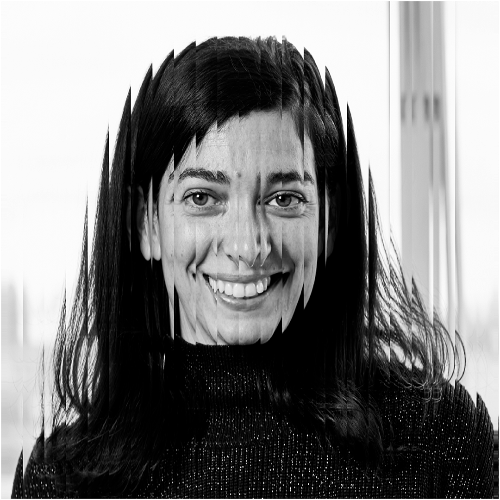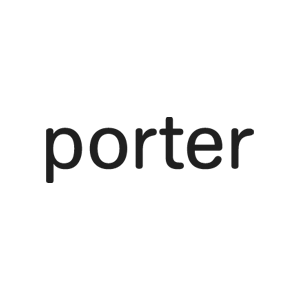We don’t limit ourselves to just ten colours or images across all our projects, so why restrict our typographic choices?
- Eleni BeveratouEleni Beveratou is a type designer and Creative Director at Dalton Maag. Ahead of her typography workshops this spring, we asked her a few questions about how she got into type design, what attendees can expect to learn during her sessions and what she’s most excited about in the world of typography at the moment.
We’re so excited to be hosting your typography workshops again this year! Can you tell us a bit about yourself, and your teaching style?
My name is Eleni Beveratou, and I’m a Creative Director at Dalton Maag, a London-based typeface design studio. I’m originally from Greece, where I studied and later worked at a branding agency. Early in my career, I realized that understanding type was crucial to becoming a better graphic designer. I joined the Master’s programme at the University of Reading, expecting to spend just one year studying type before returning to graphic design. Instead, I fell in love with typography and have dedicated my career to it for the past fifteen years.
When I first started working with type, I found the terminology quite rigid and somewhat elitist. That experience has shaped my teaching approach: I prioritize approachability, focusing less on specialized vocabulary and more on practical insights, helping designers integrate type effectively into their everyday work.
You’re leading two workshops in Calgary, Edmonton and Vancouver: one focused on wordmarks, and the other on cultural nuances in typography. What made you choose to teach these topics?
I always try to choose workshop topics that participants can immediately apply to their projects. While it’s unrealistic to teach typeface design from scratch in three hours, we can explore practical techniques for using type effectively in graphic design.
I chose these two topics because I feel they’re especially relevant to the design community in Canada. Creating wordmarks is a fundamental part of brand identity that graphic designers will regularly encounter. So I believe it’s essential knowledge to have.
The second workshop on cultural nuances in typography feels particularly relevant to Canadian designers, who often work in at least two languages. From my past visits, I noticed that many studios undertake international projects involving diverse writing systems. Addressing these cultural considerations feels both timely and essential.
You’re also leading a workshop at DesignThinkers in Vancouver on typefaces for logos. What can attendees expect from this session?
This quick session is packed with insights into the micro refinements needed when using typefaces in logo design. We’ll cover how to ensure wordmarks remain effective across different sizes, techniques for injecting personality when starting from existing typefaces, and how to navigate font licensing for logo design.
Is there anything you wish more design professionals understood about typeface design, or typeface selection?
I wish designers felt more confident using a broader range of typefaces. I often hear professionals say they stick to the same ten fonts, which always puzzles me. We don’t limit ourselves to just ten colours or images across all our projects, so why restrict our typographic choices? Often, this hesitation stems from licensing concerns, uncertainty about typographic hierarchy, or the complexity of evaluating new fonts. My goal is to help demystify these barriers through these workshops.
What are you most excited about in the world of type design right now?
I’m thrilled to see the growing adoption of Variable Font technology, which is expanding creative possibilities and significantly improving digital typography. For a long time, digital type was viewed as simply functional, limiting its potential.
Given my Greek heritage, I’m also particularly excited that these innovations are extending beyond the Latin writing system. It’s encouraging to see meaningful conversations and developments happening globally, finally addressing typographic diversity in a more inclusive way.







